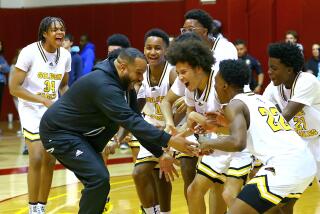New Woes for King/Drew Center
Los Angeles County hospitals designated as Level 1 trauma centers handle the toughest of medical emergencies, and arguably none has more of them than the Martin Luther King Jr./Drew Medical Center in Willowbrook, which treats more than 1,000 gunshot victims each year.
The keys to managing such crises are skill and speed, and last year King/Drew gained national headlines for mustering both after a young teacher named Alfredo Perez was struck in the head by a stray bullet while teaching a class in a South-Central elementary school. Within 18 minutes of the school’s 911 call, he was in the King/Drew emergency room, where a trauma team managed to save his life.
This week King/Drew is back in the spotlight, for a case in which both skill and speed were tragically absent. At 4:38 p.m. April 12, Torin Comeaux, shot in the leg, was wheeled into the hospital’s emergency room and deemed in immediate need of surgery. The surgery, however, did not begin until 1:05 the next morning, by which time Comeaux’s condition had plummeted. He died at 9:45 a.m.
Three mistakes are glaring. First, emergency room staffers should have been able to determine within minutes whether one of the hospital’s four qualified vascular surgeons was available and if one was not should have quickly tried another course. Instead they spent six hours trying to reach one of the surgeons before finally giving up and airlifting Comeaux to County/USC Medical Center.
Second, Drew/King’s failure to reach a qualified surgeon stands in clear violation of the hospital’s contract with the county, not to mention national standards set by the Joint Commission on Accreditation of Health Care Organizations and by a respected national peer review organization, the American College of Surgeons Committee on Trauma.
The final problem was the lack of proper oversight. Since 1989, when The Times documented a host of troubles at King/Drew--from critical mistakes in patient care to acute staff shortages and poor supervision--county supervisors have promised to look into the oversight problem. Last year, the county appeared to go beyond rhetoric, creating a crisis management task force to “evaluate and reorganize” King/Drew. But that task force has yet to disclose specific recommendations. Now, county health director Mark Finucane has organized a second task force, this one focusing on the Comeaux case. The new panel should operate both swiftly and publicly.
To ensure that King/Drew Medical Center is poised to serve its community well, the county now needs to employ the same tools--skill and speed--that probably would have saved Comeaux.
More to Read
Sign up for Essential California
The most important California stories and recommendations in your inbox every morning.
You may occasionally receive promotional content from the Los Angeles Times.









